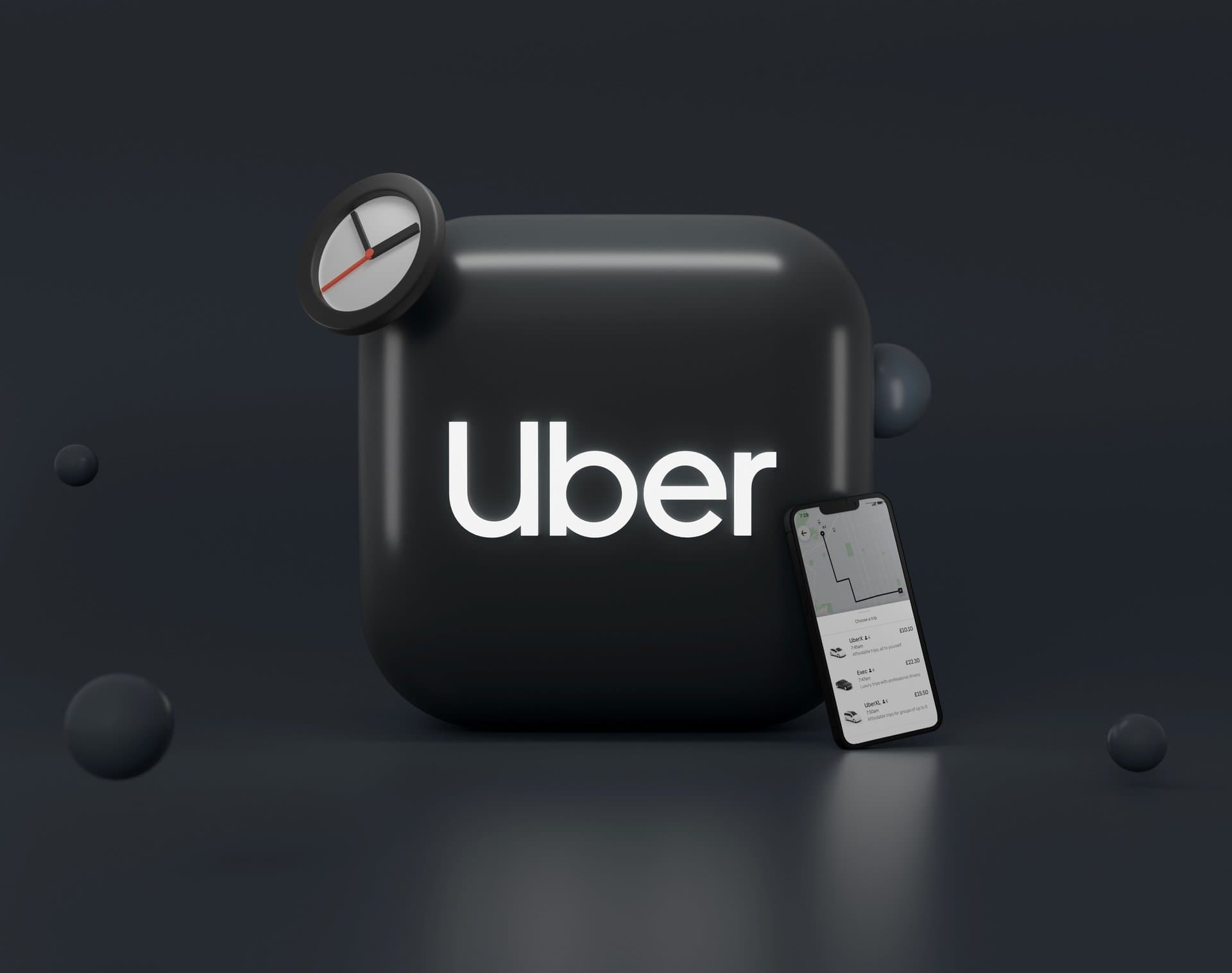Unlocking Uber’s Q1 2025 Earnings: Growth, Challenges, and Future
Explore Uber’s first-quarter 2025 earnings, revealing revenue growth, mixed results, and bold moves in autonomous vehicles, offering fresh insights into the ride-hailing giant’s evolving financial landscape.

Key Takeaways
- Uber’s Q1 earnings beat expectations with 83 cents per share versus 50 cents forecast.
- Revenue rose 14% year-over-year to $11.53 billion but narrowly missed estimates.
- Trips surged 18% to 3 billion, driven by a 14% increase in active users.
- Uber’s autonomous vehicle partnerships and robotaxi launches signal future growth focus.
- Despite strong guidance, Uber’s stock dipped due to mixed revenue results and cautious investor sentiment.

Uber Technologies kicked off 2025 with a mixed bag of financial results that tell a story of growth tempered by market expectations. The ride-hailing giant reported earnings per share of 83 cents, comfortably surpassing analysts’ 50-cent forecast, while revenue climbed 14% year-over-year to $11.53 billion—just shy of Wall Street’s $11.62 billion target. Trips on the platform soared 18% to 3 billion, fueled by a 14% rise in monthly active users. Yet, despite these gains, Uber’s stock took a hit, reflecting investor jitters over revenue misses and broader economic concerns. Beyond the numbers, Uber is doubling down on autonomous vehicle technology, partnering with industry leaders like Waymo and expanding robotaxi services in cities such as Austin. This article unpacks Uber’s Q1 2025 earnings, explores the nuances behind the stock’s tumble, and highlights the company’s strategic bets on the future of mobility.
Analyzing Uber’s Q1 Earnings
When Uber announced its first-quarter 2025 earnings, the numbers painted a picture of mixed emotions. Earnings per share came in at 83 cents, well above the 50 cents analysts expected. That’s a win that often sparks celebrations on Wall Street. But revenue told a slightly different story—$11.53 billion, up 14% from last year but just shy of the $11.62 billion forecast. It’s like throwing a party and realizing you’re one guest short of the headcount. Gross bookings, the total value of rides and deliveries, rose 14% to $42.8 billion but missed the $43.1 billion analysts had hoped for.
Trips—the heartbeat of Uber’s platform—jumped 18% to 3 billion, fueled by a 14% increase in monthly active users. This surge shows Uber’s core business is humming, with more people hopping into cars and ordering deliveries. Yet, despite these gains, Uber’s stock dropped 4.6% on the day, reflecting investor disappointment over the revenue miss and cautious outlook. It’s a reminder that in the financial world, beating earnings isn’t always enough; expectations set the stage for applause or silence.
Decoding Revenue Growth and Market Expectations
Revenue growth is the lifeblood of any company, and Uber’s 14% increase to $11.53 billion signals healthy momentum. But here’s the catch: Wall Street expected $11.62 billion, a target Uber narrowly missed. Think of it as running a marathon and finishing just seconds behind the leader—impressive, yet not quite the victory lap investors wanted. This subtle miss sparked a stock dip despite Uber’s strong earnings per share.
Digging deeper, Uber’s ride-hailing segment saw gross bookings rise 13% to $21.18 billion, while delivery bookings climbed 15% to $20.38 billion. These twin engines power Uber’s growth, but freight bookings fell 2%, hinting at some turbulence. The company’s cautious guidance for the second quarter, projecting gross bookings between $45.75 billion and $47.25 billion, slightly outpaces analyst expectations but still leaves room for scrutiny. It’s a delicate dance between delivering growth and managing market appetite for perfection.
Exploring Uber’s Autonomous Vehicle Ambitions
Beyond the hustle of rides and deliveries, Uber is steering boldly into the future with autonomous vehicles (AVs). CEO Dara Khosrowshahi calls AV technology "the single greatest opportunity ahead for Uber," and the company’s actions back up that claim. Since launching its first test vehicle in 2016, Uber has accelerated partnerships with AV pioneers like Waymo, Volkswagen, Avride, May Mobility, Aurora, WeRide, Pony.AI, and Momenta.
In Austin, Texas, Uber users can hail robotaxis exclusively through the Uber app, with about 100 Waymo vehicles operating and outperforming 99% of human drivers in completed trips per day. The company’s autonomous vehicle trips have reached an annual run-rate of 1.5 million, signaling growing consumer acceptance. These moves aren’t just tech experiments—they’re strategic plays to reshape urban mobility and delivery logistics. For Uber, the future is driverless, and the road ahead is paved with innovation.
Navigating Regulatory and Consumer Challenges
Not all roads are smooth for Uber. In April 2025, the Federal Trade Commission sued the company over alleged deceptive billing and cancellation practices related to its Uber One subscription service. CEO Khosrowshahi dismissed the suit as a "head-scratcher," emphasizing that 60% of Uber Eats’ gross bookings come from Uber One members and that the subscription is growing rapidly. He encouraged users to try canceling themselves, calling the process "very, very simple."
Meanwhile, Uber’s internal policies shifted, requiring employees to return to the office three days a week and tightening sabbatical eligibility from five to eight years. These moves reflect a company balancing growth ambitions with operational discipline. For consumers and investors, these regulatory and cultural shifts underscore the complexity of scaling a global platform amid scrutiny and evolving expectations.
Assessing Uber’s Strategic Outlook
Looking ahead, Uber’s guidance for the second quarter signals confidence. The company expects gross bookings between $45.75 billion and $47.25 billion and adjusted EBITDA of $2.02 billion to $2.12 billion, both slightly above analyst estimates. CFO Prashanth Mahendra-Rajah highlighted over $2 billion in quarterly free cash flow, emphasizing multiple levers to drive cash flow growth.
Uber’s recent $700 million acquisition of an 85% stake in Trendyol GO, a Turkish meal and grocery delivery service, marks a strategic push to expand its food delivery footprint. Supported by a 14% increase in monthly active platform consumers to 170 million, Uber’s core business remains robust. Yet, the stock’s muted reaction reveals that investors are weighing growth against economic headwinds and competitive pressures. Uber’s journey is a balancing act—delivering today while building the mobility of tomorrow.
Long Story Short
Uber’s first-quarter 2025 earnings reveal a company straddling the line between solid operational growth and the high expectations of Wall Street. The 14% revenue increase and 18% jump in trips underscore a resilient core business, while the leap from a net loss to $1.78 billion in net income signals improved profitability. Yet, the slight revenue miss and cautious stock reaction remind us that growth alone doesn’t guarantee investor applause. Uber’s bold investments in autonomous vehicles and strategic acquisitions, like the controlling stake in Trendyol GO, paint a picture of a company preparing for a future where driverless rides and expanded delivery services could redefine its revenue streams. For investors and users alike, Uber’s journey is a compelling mix of today’s hustle and tomorrow’s innovation. The key takeaway? In the fast lane of ride-hailing, staying ahead means balancing immediate wins with visionary bets—Uber’s story is far from over, and its next chapters promise to be just as dynamic.